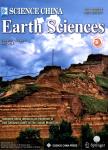Application of Avaatech X-ray fluorescence core-scanning in Sr/Ca analysis of speleothems
Application of Avaatech X-ray fluorescence core-scanning in Sr/Ca analysis of speleothems作者机构:State Key Laboratory of Loess and Quaternary Geology Institute of Earth Environment Chinese Academy of Sciences University of Chinese Academy of Sciences Center for Excellence in Quaternary Science and Global Change Chinese Academy of Sciences Institute of Global Environmental Change Xi'an Jiaotong University Open Studio for Oceanic-Continental Climate and Environment Changes Pilot National Laboratory for Marine Science and Technology Department of Earth Sciences University of Minnesota Department of Geological Sciences University of Texas at San Antonio
出 版 物:《Science China Earth Sciences》 (中国科学(地球科学英文版))
年 卷 期:2019年第62卷第6期
页 面:964-973页
核心收录:
学科分类:08[工学] 0816[工学-测绘科学与技术]
基 金:supported by the National Key Research and Development Program of China (Grant No. 2017YFA0603401) Shaanxi Science Fund for Distinguished Young Scholars (Grant No. 2018JC-023) Youth Innovation Promotion Association (Grant No. 2012295) West Light Foundation of Chinese Academy of Sciences a part of The "Belt & Road" Project of the Institute of Earth Environment, Chinese Academy of Sciences
主 题:Avaatech XRF Speleothem Sr/Ca Paleoclimate
摘 要:Application of X-ray fluorescence core-scanning(XRF-CS) on both marine and lake sediments has achieved remarkable results. However, its application has not been widely extended to the research on speleothems. In this study, we measure the Sr abundance and the Sr/Ca ratios of three stalagmites(two aragonite stalagmites, one calcite stalagmite) using the state-of-the-art fourth-generation Avaatech high-resolution XRF core scanner. Through comparisons among different scan paths and among different scan resolutions, as well as comparisons with inductively coupled plasma optical emission spectrometer(ICP-OES), Itrax XRF, and Artax XRF results, we confirm that the Avaatech XRF core scanner could precisely, quickly, and nondestructively analyze the high-resolution Sr abundance of speleothems. Furthermore, we combine the stalagmite δ^(18)O records to explore the paleoclimatic significance of the measured stalagmite Sr/Ca.



